- 翰林提供学术活动、国际课程、科研项目一站式留学背景提升服务!
- 400 888 0080
IB DP Maths: AI HL复习笔记5.4.3 Further Applications of Integration
Negative Integrals
- The area under a curve may appear fully or partially under the x-axis
 this occurs if the negative area(s) is/are greater than the positive area(s), their sum will be negative
this occurs if the negative area(s) is/are greater than the positive area(s), their sum will be negative -
How do I find the area under a curve when the curve is fully under the x-axis?
STEP 1
Write the expression for the definite integral to find the area as usual
This may involve finding the lower and upper limits from a graph sketch or GDC and f(x) may need to be rewritten in an integrable form
STEP 2
The answer to the definite integral will be negative
Area must always be positive so take the modulus (absolute value) of it
 How do I find the area under a curve when all, or some, of the curve is below the x-axis?
How do I find the area under a curve when all, or some, of the curve is below the x-axis?
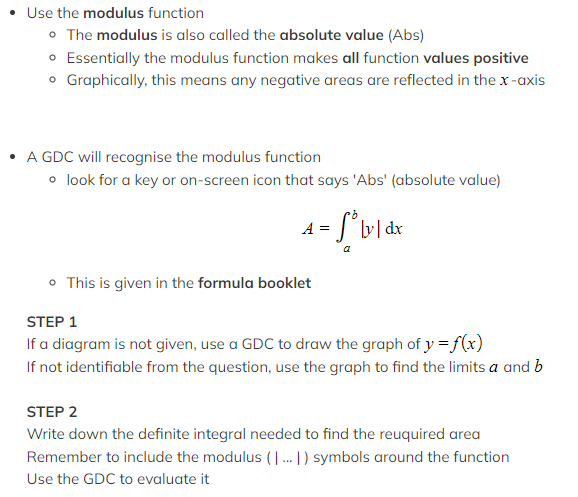 Exam Tip
Exam Tip
- If no diagram is provided, quickly sketch one so that you can see where the curve is above and below the x - axis and split up your integrals accordingly
- You should use your GDC to do this
Worked Example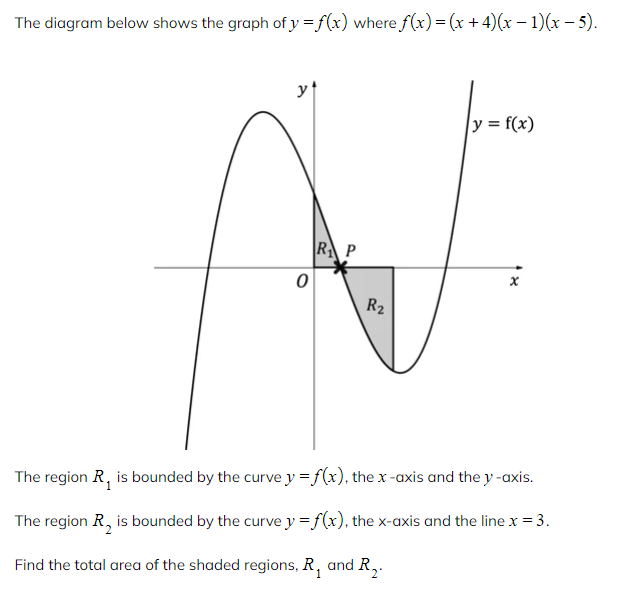
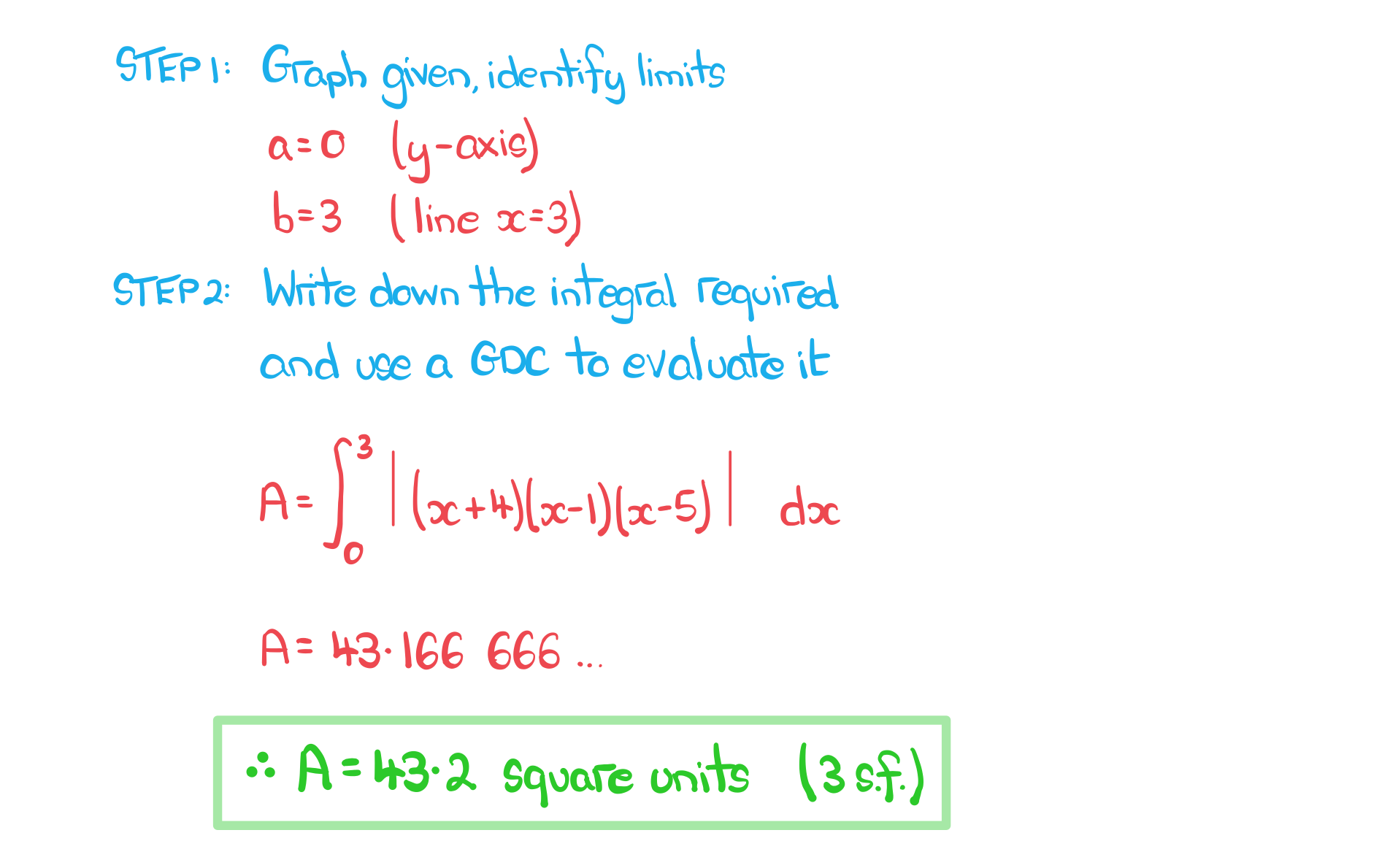 Area Between Curve & y-axis
Area Between Curve & y-axis
What is meant by the area between a curve and the y-axis?
- The area referred to is the region bounded by
 The exact area can be found by evaluating a definite integral
The exact area can be found by evaluating a definite integral
How do I find the area between a curve and the y-axis?
- Use the formula
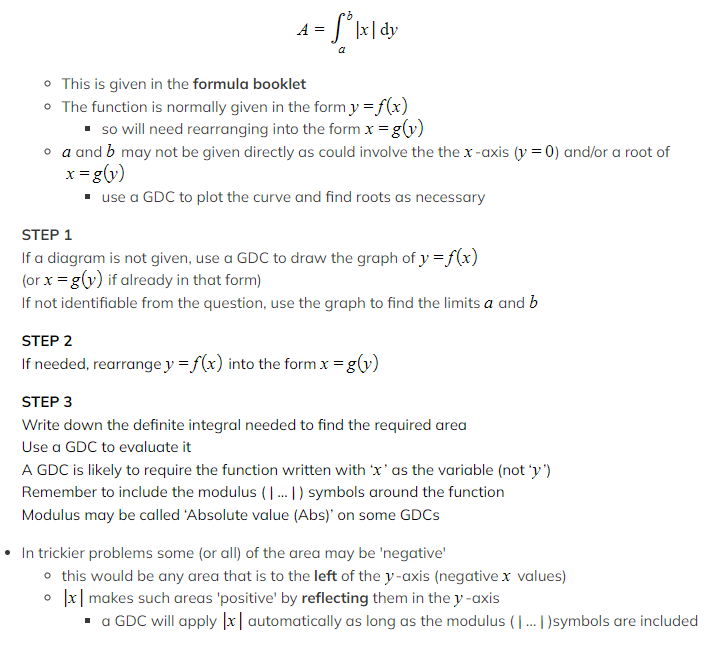 Exam Tip
Exam Tip
- If no diagram is provided, quickly sketch one so that you can see where the curve is to the left and right of the y - axis and split up your integrals accordingly
- You should use your GDC to do this
Worked Example
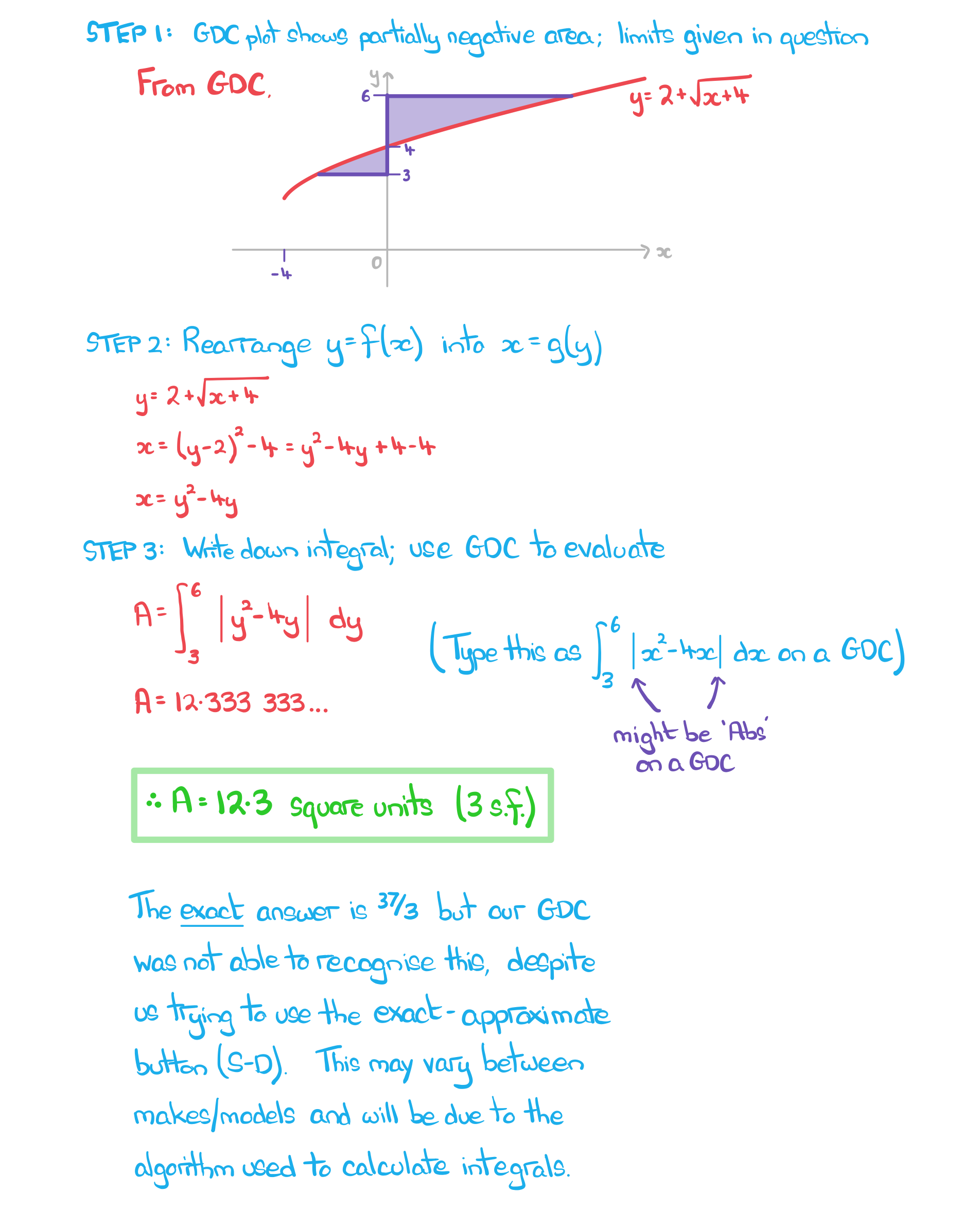
Area Between a Curve and a Line
- Areas whose boundaries include a curve and a (non-vertical) straight line can be found using integration
- For an area under a curve a definite integral will be needed
- For an area under a line the shape formed will be a trapezium or triangle
- basic area formulae can be used rather than a definite integral
- using a GDC, one method is not particularly trickier than the other
- The total area required could be the sum or difference of the area under the curve and the area under the line
How do I find the area between a curve and a line?
STEP 1
If a diagram is not given, use a GDC to draw the graphs of the curve and line and identify the area to be found
STEP 2
Use a GDC to find the root(s) of the curve, the root of the line and the 
x " alt="x" data-mathml="<math xmlns="http://www.w3.org/1998/Math/MathML"><semantics><mi>x</mi><annotation encoding="application/vnd.wiris.mtweb-params+json">{"language":"en","fontFamily":"Times New Roman","fontSize":"18"}</annotation></semantics></math>" />-coordinate of any intersections between the curve and line
STEP 3
Use the graph to determine whether areas will need adding or subtracting
Deduce the limits and so the definite integral(s) to find the area(s) under hte curve and line
Use a GDC to calculate the area under the curve STEP 4
STEP 4
 STEP 4
STEP 4Add or subtract areas accordingly to obtain a final answer
Exam Tip
- Add information to any diagram provided
- Add axes intercepts, as well as intercepts between lines and curves
- Mark and shade the area you’re trying to find
- If no diagram provided,use your GDC to graph one and if you have time copy the sketch into your working
Worked Example

转载自savemyexam

最新发布
© 2025. All Rights Reserved. 沪ICP备2023009024号-1









